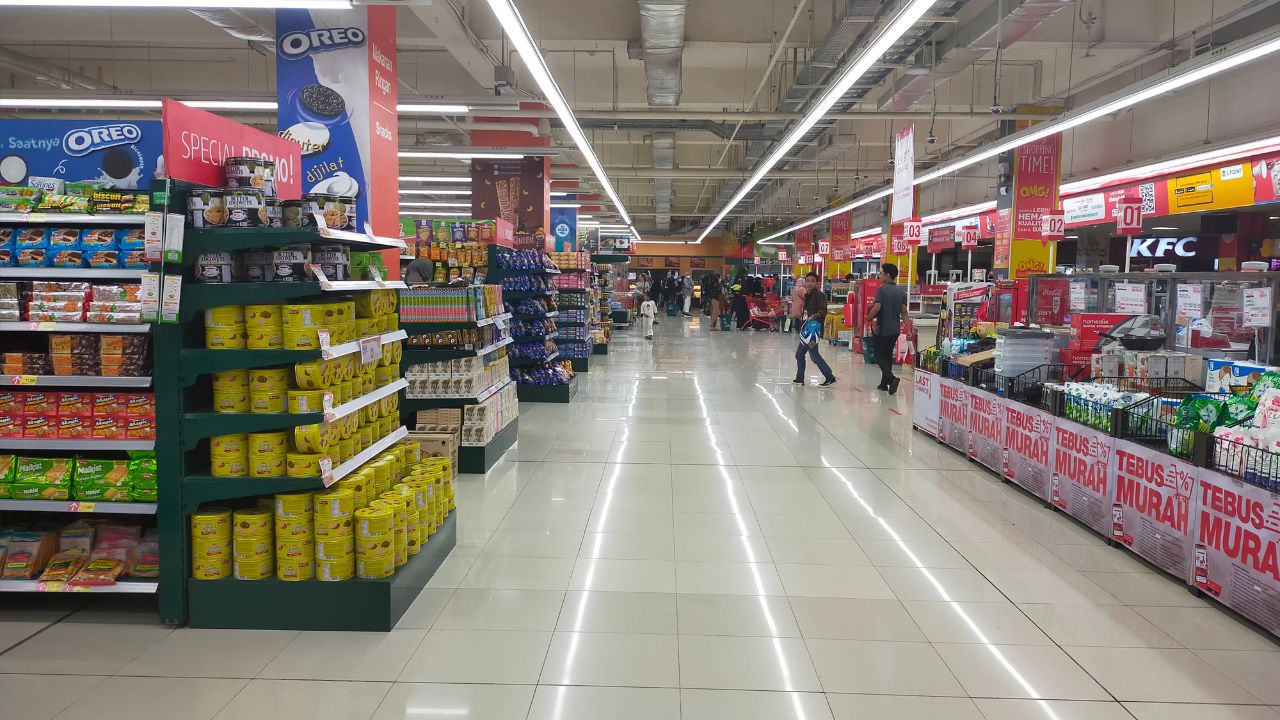Retail merchandising solutions are central to driving sales and delivering exceptional shopping experiences. With today’s competitive market dynamics, effective merchandising is essential for optimizing product placement, increasing transaction values, and capturing customer attention.
This article dives into comprehensive strategies that combine data insights, visual displays, and advanced technology to express brand identity while improving in-store navigation and shopper connections.
Key Takeaways
- Align merchandising efforts seamlessly with your brand identity.
- Leverage smart product placement, cross-merchandising, and seasonal strategies to boost sales.
- Foster shopper engagement through immersive in-store atmospheres and interactive displays.
- Use technology like digital signage and data analytics to improve space management and retail marketing strategies.
What Makes Retail Merchandising Solutions Effective?
Effective retail merchandising combines the art of visual storytelling with data-driven strategies. It involves using signage, optimized layouts, and technology to design an engaging shopping experience.
This process requires a deep understanding of customer behavior, well-executed logistics, and precise data collection. Seasonal displays and thematic setups are great examples of techniques that enhance shopper engagement and create a positive shopping flow.
Essential Components of a Well-Rounded Merchandising Strategy
A successful merchandising plan includes the following elements:
- Product Assortment Planning
Match your inventory to customer preferences while ensuring variety. - Fixture Installations & Signage
Guide shoppers intuitively through your store layout while emphasizing key products. - Data Analytics & Project Management
Use insights to adapt to changing retail market trends, refining strategies for retail marketing success.
When executed together, these components enhance shopper engagement, reinforce your brand strategy, and maximize sales potential.
Align Merchandising Strategies with Your Brand
Your brand’s core values should shine through every in-store element. From signage to color schemes and lighting choices, consistency is key. Coordinating marketing materials with merchandising displays fosters trust and strengthens brand recognition.
Visual vs. Product Merchandising
While visual merchandising focuses on creating an appealing in-store atmosphere with window displays and thematic setups, product merchandising zeroes in on strategic product placement, like grouping complementary items. These approaches work hand-in-hand to captivate shoppers and encourage purchases.
Optimizing Store Layouts for Efficient Merchandising
Store layouts play a vital role in merchandising success. Organizing products logically, using clear visual guidelines, and positioning high-margin items near entrances or checkout counters can greatly enhance revenue. An adaptable layout also accommodates seasonal changes and new trends.
Merging Merchandising Solutions with Omnichannel Retail
Omnichannel retailing ensures your in-store strategies align with digital touchpoints. Integrating insights from online customer behavior into physical merchandising improves inventory placements and creates a seamless shopping experience across both worlds.
Boosting Sales with Smart Merchandising Tactics
Smart merchandising focuses on maximizing each interaction with your products:
- Strategic Product Placement
Position high-demand and high-margin items strategically to boost sales. - Cross-Merchandising
Group complementary products, like pairing accessories with main items, to encourage larger purchases. - Promotional Merchandising
Use attention-grabbing displays for limited-time offers to convert browsers into buyers.
Encouraging Impulse Purchases & Building Urgency
High-traffic spots, like checkout areas, are perfect for placing small, low-cost items. Bright colors and dynamic signage here trigger emotional responses, making unplanned purchases more likely.
Seasonal Merchandising for Peak Sales
Seasonal campaigns, especially during holidays or special events, provide opportunities to create themed store displays that attract attention and boost overall basket sizes. Pre-planning ensures a memorable shopping experience during these peak times.
Building Connections Through Engaging Merchandising
Retail merchandising is not just about selling products. It’s about stories and experiences that create emotional bonds between customers and your brand. Techniques like sensory elements and interactive displays build loyalty and encourage return visits.
Thematic Merchandising & Storytelling
Using props, cohesive color themes, and curated displays transforms your space into more than a store. Storytelling through products, like sustainable or heritage-based themes, differentiates your brand while educating customers.
Interactive Displays That Captivate
Interactive kiosks, demo areas, and touchscreens enrich in-store exploration. These tools engage customers and also provide valuable data that can inform future merchandising decisions.
Sensory Merchandising for Memorable Experiences
Incorporating sight, sound, smell, and touch into your merchandising strategy elevates the shopping experience. Music, lighting, and textures create immersive environments that encourage longer visits and enhance brand perception.
Tailoring Merchandising for Personalized Journeys
Personalization is increasingly important in successfully engaging shoppers. Analyze customer data to curate tailored displays, navigation pathways, and promotions. This approach reinforces loyalty and ensures relevance for evolving consumer needs.
Practical Merchandising Tips for Immediate Results
- Optimize Shelf Space: Ensure visibility for high-demand items.
- Use Clear Signage: Guide customers to key sections quickly and effectively.
- Create Visual Focal Points: Highlight feature products with bold colors or unique placements.
- Leverage Color Psychology: Encourage purchases through targeted color use.
- Audit Regularly: Keep displays fresh and relevant.
The Role of Technology in Merchandising
Technology enables retailers to innovate and refine their merchandising strategies:
- Digital Signage & Interactive Displays: Capture customer attention with dynamic content.
- Data Analytics: Use insights to understand customer preferences and enhance marketing strategies.
- AI & Machine Learning: Provide product recommendations tailored to individual shoppers.
- Planogram Software: Organize inventory for efficiency and better sales.
- Augmented Reality (AR): Offer virtual try-ons or allow shoppers to visualize products in their space.
Evaluating & Refining Merchandising Strategies
Merchandising success hinges on continuous optimization. Regularly evaluate performance metrics like foot traffic, sales conversion rates, and average transaction values. Experiment with A/B testing and leverage customer feedback for actionable improvements.
Key Metrics to Monitor
Track indicators such as conversion rates and basket sizes to gauge effectiveness and tweak strategies as needed.
A/B Testing for Continuous Growth
Test various layouts, promotions, and setups to find what resonates best with your audience.
Customer Feedback
Surveys and in-store interactions provide valuable insights into shopper preferences and pain points.
Closing Thoughts
Strategic merchandising solutions are essential for boosting sales and creating rewarding shopping experiences. By blending traditional methods with innovative technology, retailers can stay competitive while deepening customer connections.
Continuous refinement based on performance and feedback ensures ongoing success.
Prioritize your retail marketing strategy and unlock your store’s full potential with advanced, customer-focused merchandising solutions.
Discover more tips and strategies to boost your retail success by visiting the Marketing Immersion blog today!






